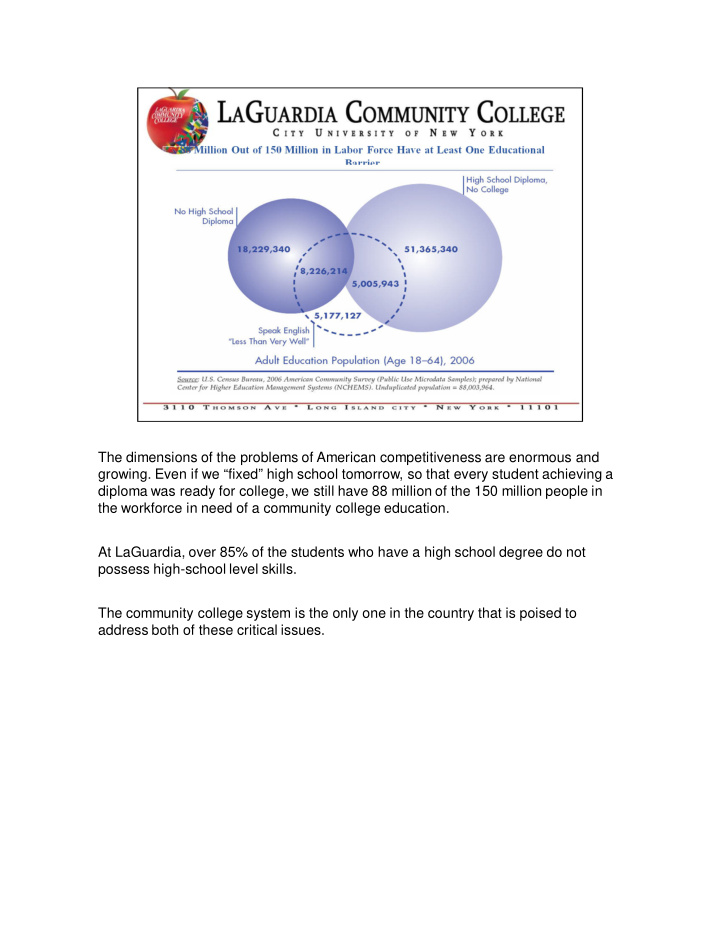



The dimensions of the problems of American competitiveness are enormous and growing. Even if we “fixed” high school tomorrow, so that every student achieving a diploma was ready for college, we still have 88 million of the 150 million people in the workforce in need of a community college education. At LaGuardia, over 85% of the students who have a high school degree do not possess high-school level skills. The community college system is the only one in the country that is poised to address both of these critical issues.
The US ranks 10 th among th 30 largest economies in the world in associate degree attainment. And we are the only country where individuals 45-54 are MORE likely to have at least an associate’s degree than younger students. It is only the community colleges that can address this problem. 2 2
5 million of the 11.5 million students in community colleges are involved in the workforce development initiatives that are typically offered through non-credit education. There is no standard meausre of this key educational service nationally, and virtually no consistent city, state or federal funding for these essential initiatives that address the needs most specifically of low income people and jobs in urban settings.
These graphs show the relative academic disadvantage of LaGuardia’s students (and CUNY community college students in general) when compared to CUNY’s four year students by imputing SAT scores based upon failure of reading, writing and mathematics placement tests to the actual SAT scores for four year colleges. These students aren’t just starting behind – they begin WAY behind.
But the power of the community college is how students fare within the system. CUNY has a “rising junior” examination, a rigorous test of reading, writing and computation that is given to every student entering the junior year – whether from a community college or a four year college. LaGuardia students in 2007 achieved exactly the same rate (93% passing) as the much better prepared students selected for admission by the four year colleges.
Just a bragging point – LaGCC students pass the National Certification and Licensure Examination (NCLEX) at significantly higher rates than 4 year college students.
This slide shows eight semesters of candidacy (admission) for students in LaGCC’s licensed practical nurse, registered nurse, occupational therapy assistant and physical therapy assistant programs. Students who are “qualified” have already successfully completed a series of courses (for example, English, mathematics, Biology, & Chemistry) and maintained a B or better average. The slide indicates that LaGuardia could not accept over 1,200 qualified individuals during the eight semesters because of lack of full time faculty and laboratories.
Using average salaries, this slide shows that, had LaGuardia been able to accept the additional qualified students they would have made over $11m annually. Moreover, the graph shows that these individuals who were not accepted would have brought their families out of poverty, because the average family income for LaGCC students is about $26,000. Typical starting salaries for these allied health careers are over $50,000. Year after year, lack of investment by the City of New York in its community colleges has thwarted dreams and undermined the development of human capital.
Recommend
More recommend